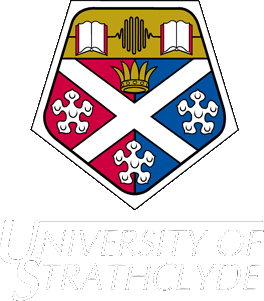Modelling the Flow characteristics of a channel
This method above is implemented in a Matlab script, with input being provided in the form of a coloured bitmap image constructed using Autocad. The bitmap is of a cross section of interest, and is created by using the mapping technique described here. It is then coloured using a specific key so as areas of differing bottom roughness are distinguishable.

The overall channel Manning number and velocity is input along
with various terms to aid the program in finding points of inflection.
The program runs under the assumption that the velocity at a given
point is influenced by that points proximity to the wall: the
interaction between the fluid at one point and that at another
is not modelled.
This drastically simplifies the calculation and has a profound
effect on calculation time over more complete finite difference
methods (the disadvantage is that this is another assumption to
add to a growing list of other ad hoc assumptions made during
Cole’s derivation).
The program uses values of dx and dy to discretise the geometry of the channel section, and then calculates a velocity profile in the vertical and horizontal directions at each station based on the slope of the element. The profile is first generated for the overall channel mannings number, and the results of this are then used as the freestream velocities for the caclulations which include roughness effects. In all, the boundary layer calculation module is called three times:



The output is a computed value of velocity at every point in the channel in the channels axial direction.

Tool
The Velocity Distribution tool can be accessed by clicking on the tool icon. The tool consists of Matlab Programme and instructions are contained within the file. |
- Inputs: coloured (16 Windows Cols) bitmap .bmp file; dx, dy; tolerance for finding turning pts.; Manning number; Slope; bulk flow velocity
- Outputs: velocity distribution
References
| 1 | British Oceanographic Data Centre. [Webpage] [cited 02 May 2006]; Available from http://www.bodc.ac.uk/ |
| 2 | UK Hydrographic Office: Admiralty Charts & Publications. [Webpage] [cited 02 May 2006]; Available from http://www.ukho.gov.uk/ |
| 3 | Black & Veatch Ltd., The Carbon Trust: Phase 1 & 2 Uk Tidal Stream Energy Resource Assessment. [Webpage] 2005 [cited 02 May 2006]; Available from http://www.thecarbontrust.co.uk/ctmarine10/page4.htm |
| 4 | Scottish Enterprise: Marine Renewable (Wave and Tidal) Opportunity Review. [PDF] 2005 [cited 02 May 2006]; Available from http://www.scottish-enterprise.com/publications/marine_renewable_opportunity_review.pdf |
| 5 | ANDROSOV, A.A., et al., Numerical Modelling of Barotropic Tidal Dynamics in the Strait of Messina. Advances in Water Resources, 2002. 25(4): p. 401-415. |
| 6 | MOE, H., et al, A High Resolution Tidal Model For The Area Around The Lofoten Islands, Northern Norway, Continental Shelf Research, 2002. 22: p. 485–504 |
| 7 | CALVERT, J., Open Channel Flow. 2003 [cited 02 May 2006]; Available from http://www.du.edu/~jcalvert/tech/fluids/opench.htm |
| 8 | CHOW, V.T., Open-Channel Hydraulics. Mcgraw-Hill Civil Engineering Series. 1959, New York, London: McGraw-Hill Education. pp. 692. ISBN 007085906X. |
| 9 | COPELAND, G., Seminar on Turbulence Modelling. 2006, Univerisity of Strathclyde. |
| 10 | GARRETT, C. Frictional Processes in Straits. 2004. Villerfranche-sue-Mer, France: Elsevier. |
| 11 | GROSS, T.F., Momentum and Energy Transfer in the Oceanic Law of the Wall Region. Journal of Atmospheric and Ocean Technology, 1999. 16(Nov): p. 1668-1672. |
| 12 | LERMUSIAUX, P.F.J. and ROBINSON, A.R., Features of Dominant Mesoscale Variability, Circulation Patterns and Dynamics in the Strait of Sicily. Deep-Sea Research Part I: Oceanographic Research Papers, 2001. 48(9): p. 1953-1997. |
| 13 | LU, Y., et al., Turbulence Characteristics in a Tidal Channel. Journal of Physical Oceanography, 2000. 30(5): p. 855-67. |
| 14 | MUNSEN, B., et al., Fundamentals of Fluid Mechanics. 3 ed. 1998, New York: John Wiliey & Sons. pp. 877. ISBN |
| 15 | NEZU, I. and NAKAGAWA, H., Turbulence in Open-Channel Flows. Iahr Monograph Series. 1993, Rotterdam: Balkema. ISBN 9054101180. |
| 16 | ROMANENKOV, D.A., et al., Comparison of Forms of the Viscous Shallow-Water Equations in the Boundary-Fitted Coordinates. Ocean Modelling, 2001. 3(3-4): p. 193-216. |
| 17 | VENNELL, R., Observations of the Phase of Tidal Currents Along a Strait. Journal of Physical Oceanography, 1998. 28(8): p. 1570-1577. |
| 18 | VENNELL, R., Oscillating Barotropic Currents Along Short Channels. Journal of Physical Oceanography, 1998. 28(8): p. 1561-9. |
| 19 | WARNER, J., et al., Effects of Tidal Current Phase at the Junction of Two Straits. Continental Shelf Research, 2002. 22(11-13): p. 1629-1642. |
| 20 | WHITE, F.M., Viscous Fluid Flow. 2 ed. Mcgraw-Hill Series in Mechanical Engineering. 1991, New York, London: McGraw-Hill. 614. ISBN 0070697124. |
| 21 | WINTERS, K.B. and SEIM, H.E., The Role of Dissipation and Mixing in Exchange Flow through a Contracting Channel. Journal of Fluid Mechanics, 2000. 407: p. 265-90. |
| 22 | YOUYO, L., et al., Turbulence Characteristics in a Tidal Channel. Journal of Phsical Oceanography, 2002. 30(May): p. 855-867. |
Go back to Contents

 Home
Home 

